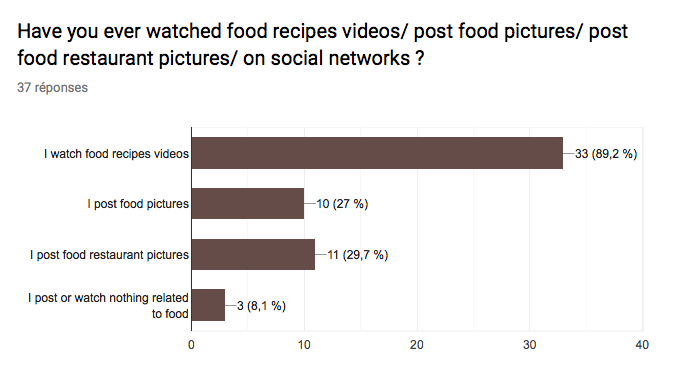Proposed concept
“F.OO.D.L.Y save food, be friendly” (Foodly hereafter) will be a free app that targets students. Since a high number of students uses social networks and in particular Instagram in their daily routines, we would like to launch an app based on the design of Instagram to propose recipes and avoid food waste as much as we can.
The app will function as follows. After opening the app, users will see a bar at the bottom with an array of options. On the left, there will be a function which allows users to specify (1) the remains in their fridge, (2) their budget (could be nil), and (3) number of meals they want to cover in one cooking session. Once the relevant information is added, an algorithm will give back different recipe ideas. Each recipe will be easy and quickly to prepare, and the dosage adjusted for one person. ‘Attractive’ and appealing pictures will encourage users to cook. After selecting their preferred recipe, users will see the list of necessary ingredients with the respective proportions. In case extra ingredients are needed, users will be given the exact quantities and additional recipes to maximise usage of the food in excess (e.g. if they need to buy 1 egg, they will also receive suggestions on how to use the remaining 5 eggs in the box). If the student has given the app the geolocalization access, suggestions will be made to find the missing ingredients in sustainable local shops close to the place where they live. Clearly, the aim of the app is not to push students to buy food items, but instead to push them to cook what they already have in their fridge.
Once the user has prepared dish, he/she will be allowed to rate the recipe and share pictures of the meal. Connections with friends (such as pictures on Instagram) and the link of the recipe allow an indirect marketing of the application. We will thus put a particular attention on the design of the application to make as user-friendly and appealing as possible. Should the student’s location and notification be allowed, Foodly can give suggestions and information regarding activities and discounts from sustainable local shops/restaurants (that have to pay us in order to be promoted in the application). This clearly strengthens local partnerships, which are indispensable for the fight against food-waste on all levels of society and economics. Moreover, students could find educational content about food such as information on seasonal vegetables, advice on consuming all parts of an item. A chat will allow them to share tips with each other.
Which other solutions do exist ?
There are currently other apps that encourage a more efficient and responsible way of consuming food (e.g. Epicurious, SuperCook, CookPad, etc.), but improvements can and have to be made. Some applications provide a poor user experience (e.g. Cookpad), while others lack the community aspect (i.e. they simply function as recipe founder with no emphasis on sharing and social connection). Some applications for reducing food waste are already established in the consumer market. As such, Too Good to Go or Phenix, which consist of launching partnerships with bakeries, supermarkets and even sometimes hostels, allow people to buy a “panier” at the end of the day. Users receive food items that would otherwise perish in a few days with a 63% discount on the original price. Partage ton frigo is another app that allows to share excess food between neighbors or deposit it in a collective fridge accessible to many. There is no similar project to Foodly, as it targets students specifically. Additionally, no other app integrates educational content or inspires a sense of virtual / sustainable community the way Foodly will.
Why is our solution effective, original and feasible?
F.OO.D.L.Y aims at strengthening strong incentives that influence students to change their behavior and stop wasting food. We observed that social networks have a direct influence on the behavior of students. Being part of a community encourages them to take action. As Foodly can be perceived as very appealing to students (“instagrammable” pictures, sharing pictures and reactions), it can have an overall positive impact by changing students’ behavior and encourage them to fight against climate change. They learn food-management related tools and how to implement them. Hence, saving food needs to become appealing, sexy and cool. This application is more original compared to other existing solutions: the basic idea is to create a community, a new appealing image of saving food and will be associate to concrete initiatives with a viral platform. It is therefore an educational and incentive project. Our application project is feasible and quite easy to launch even if the application development requires a professional application designer looking for partners and allies, but also influencers that will promote the app from its beginning.
POC and tests
In order to know if our idea is applicable/appealing to students, we designed a survey that asks some students to answer to specific questions. This survey was answered by 37 students. 26 of them use Instagram and 21 of them post regularly pictures of food of restaurants.


Even though this is a small basis, the results suggest that creating an app where students can simultaneously search for food recipes and post pictures appears here to be relevant. Before launching the application, we also would like to do a pre-test by asking some students to test it and give us their feedbacks - so that we can improve it.



